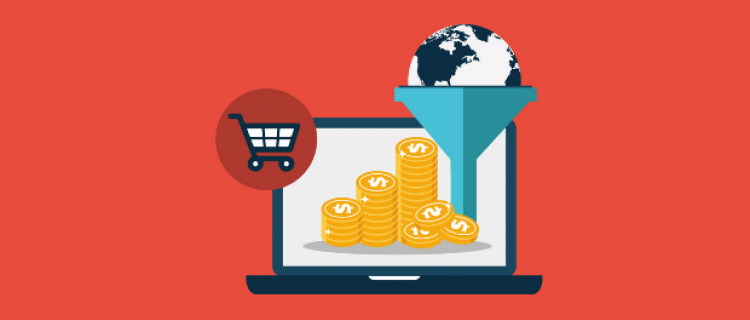
Simplify cross-border selling with multi-currency
Digital cross-border buying continues to grow in popularity. Based on a survey of consumers in 12 countries, 70% of online buyers made a purchase from a foreign site in 2017. This is six percentage points higher than the previous year. The main reasons for this increase is lower prices from foreign retailers, as well as brands or products that are not available in the home country.
Cross border selling, or buying digitally on foreign websites, is becoming a key tactic for driving e-commerce business growth. A majority of companies see this as a critical source of future online growth, and seven out of every ten European online shoppers have made a purchase from an international retailer outside their home market. The top two motivating factors for doing so are better prices and the search for a specific brand or product. Not expanding to new regions could mean a missed opportunity and lost sales. Knowing the right time to expand may be as simple as establishing solid momentum in your home region.
Hurdles to regional expansion
Some of hurdles businesses have voiced as they think through the logistics of geographic expansion include: country regulations like product safety, marketing practices, customs, and taxes, as well as some of the key operational blockers like language, customer support, and regional fulfillment. Recently, governments are tightening customs regulations or introducing new fees as they see more parcels arriving for their citizens from international websites. As you consider where to grow your business, clarify the implications of regionalizing your content, support, fulfillment policies, and strategies to understand the real cost of business within a specific region.
Choosing a region
Once you’ve determined it is the right time to expand to a new region, there are a number of way to identify the right region. If you don’t have enough data, test international traffic with PPC advertising to gauge the response. Consider starting with regions near your primary region first. A few more considerations:
- Determine which countries have favorable exchange and tax rates.
- Reframe your posts to appeal to a global audience, not just a region.
- Start first by tapping into an existing online marketplace infrastructure already established in the region you want to expand into.
Enable technologies to enable expansion
Another concern is what currency you are offering on your website. Customers are more likely to complete a sale if they’re presented with their preferred payment option, currency and language.
One option is offering a digital payment service to help you quickly expand to new regions with different currencies. Amazon Pay is helping merchants and shoppers move beyond their borders with multi-currency functionality to help businesses list prices in more than one currency on their website and charge their customers the exact amount quoted on the site. Customers using VISA and Mastercard will be able to pay in any of the 12 currencies that merchants choose to enable on their Amazon Pay supported website. Any remaining payment methods in the customer’s wallet will be greyed out.
Through multi-currency, Amazon Pay can help increase conversions, minimize refunds and reduce chargebacks. Account statement charges match quoted checkout amounts, eliminating currency conversion rate discrepancies, so customers can focus more on the purchase. Merchants can also add any bank account in the SEPA region (34 countries) to their EUR Amazon Pay account. Amazon Pay supports various account/legal entity/bank account country constellations.
To remain competitive on a global scale, merchants need to offer familiar payment options that customers in foreign countries trust. By extending a trusted experience to their shoppers, merchants make it easier for 300 million active customer accounts worldwide to check out on their website with their existing Amazon account.
Start cross border selling
As you consider ways to expand internationally and enable cross border selling, consider all of the implications this can have on your business to understand the real cost of doing business in a specific country or locale. When thinking about what region to choose here are a few places to start:
- Test international traffic with PPC advertising to gauge the response.
- Consider starting in locales with a common language. For example, if you’re the US, maybe you start in English speaking markets like Canada, Australia, and the UK.
- Determine which countries have favorable exchange and tax rates.
- Try tapping into an existing online marketplace infrastructure already established in the region you want to expand into.
Learn more about one way to enable faster expansion with multi-currency functionality from Amazon Pay.





